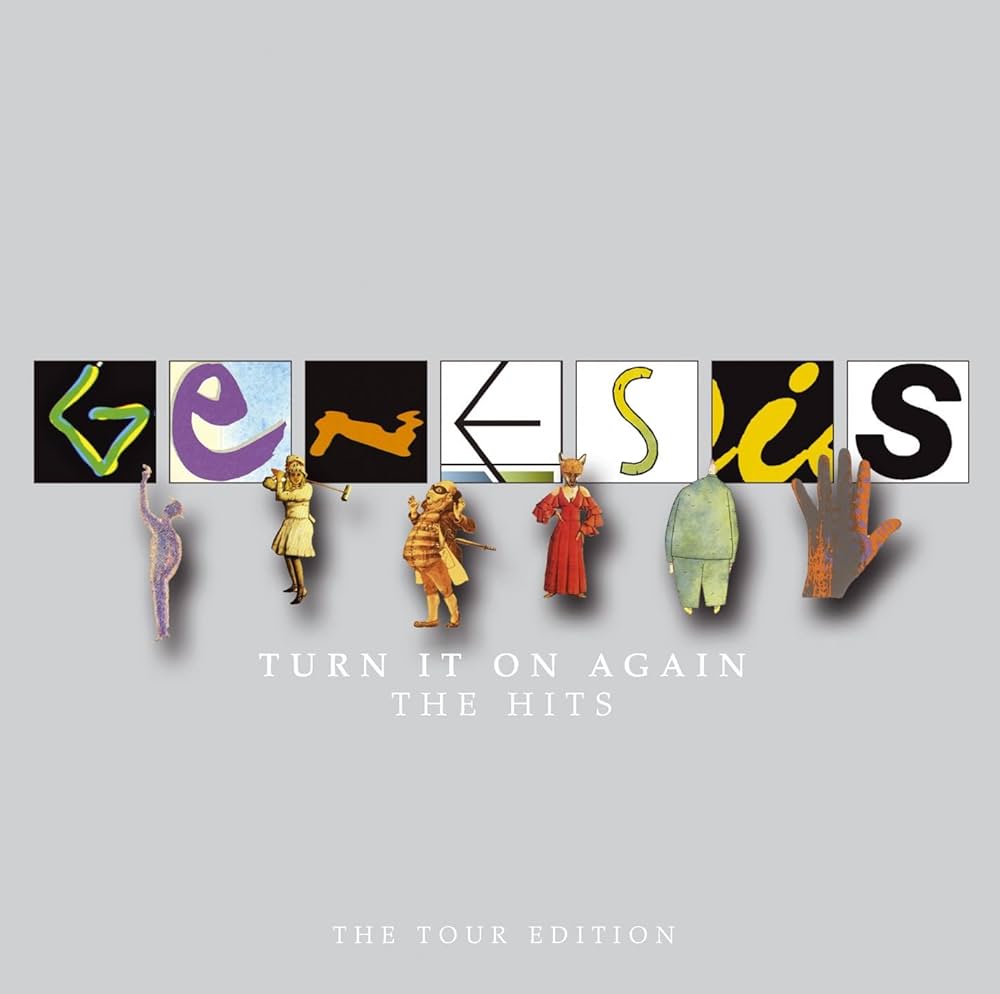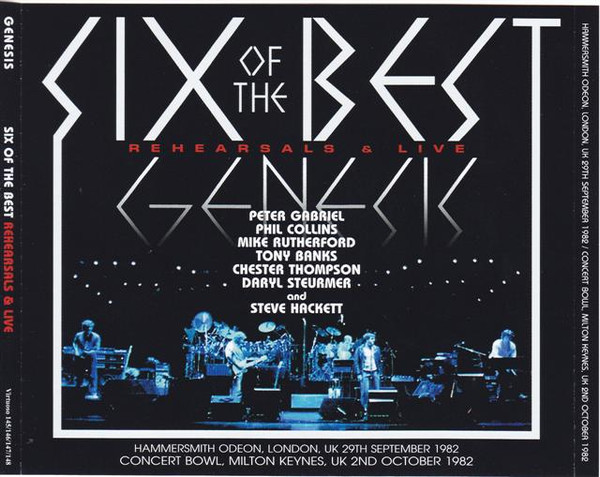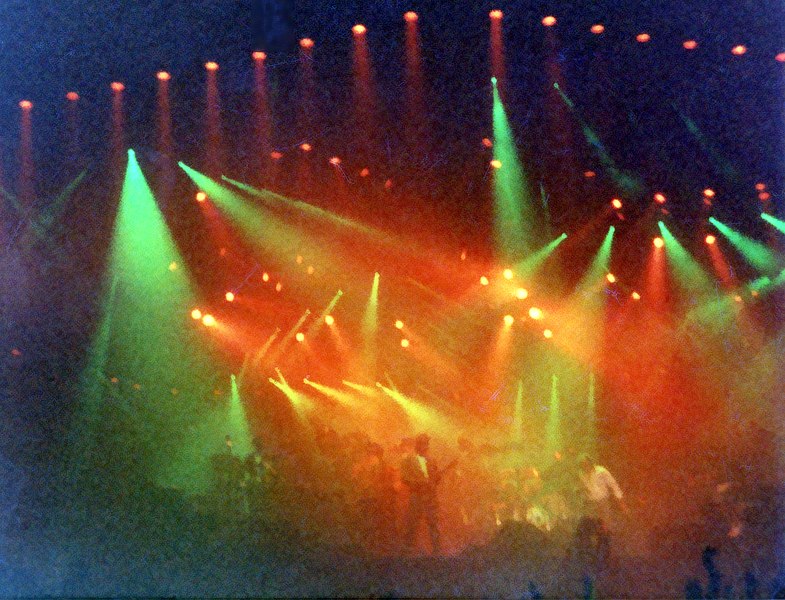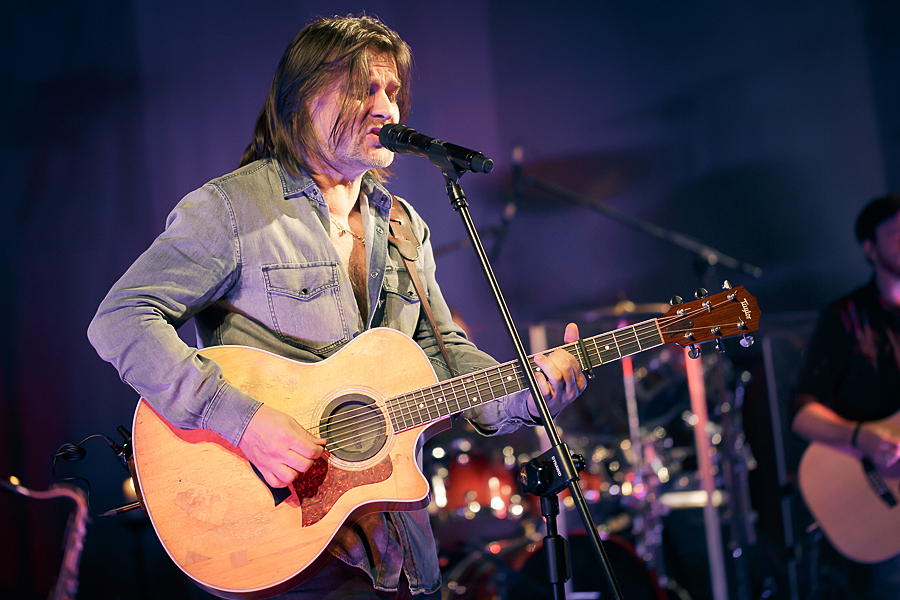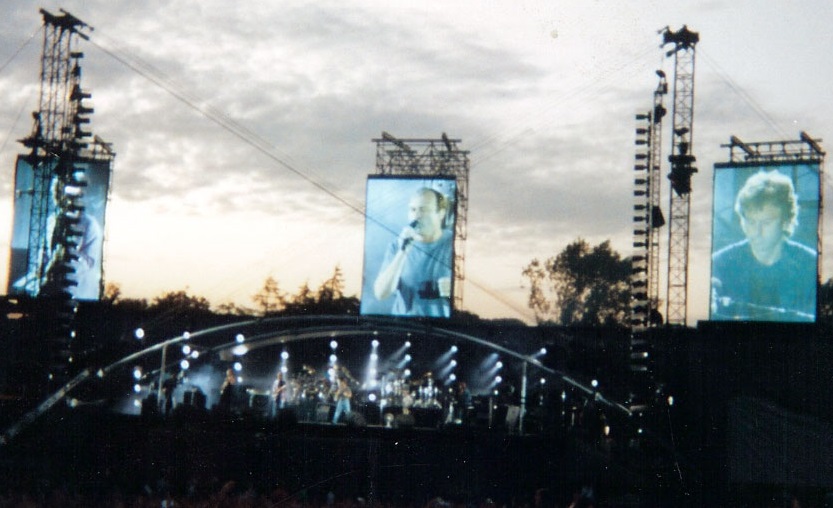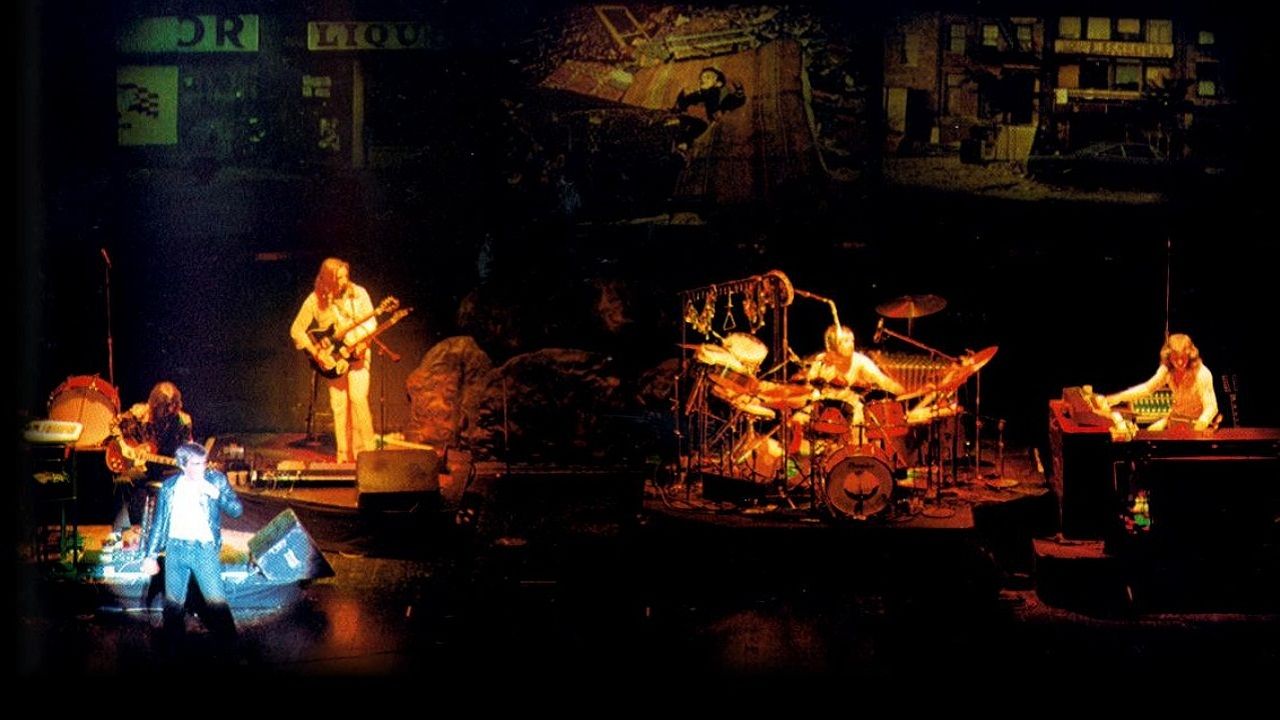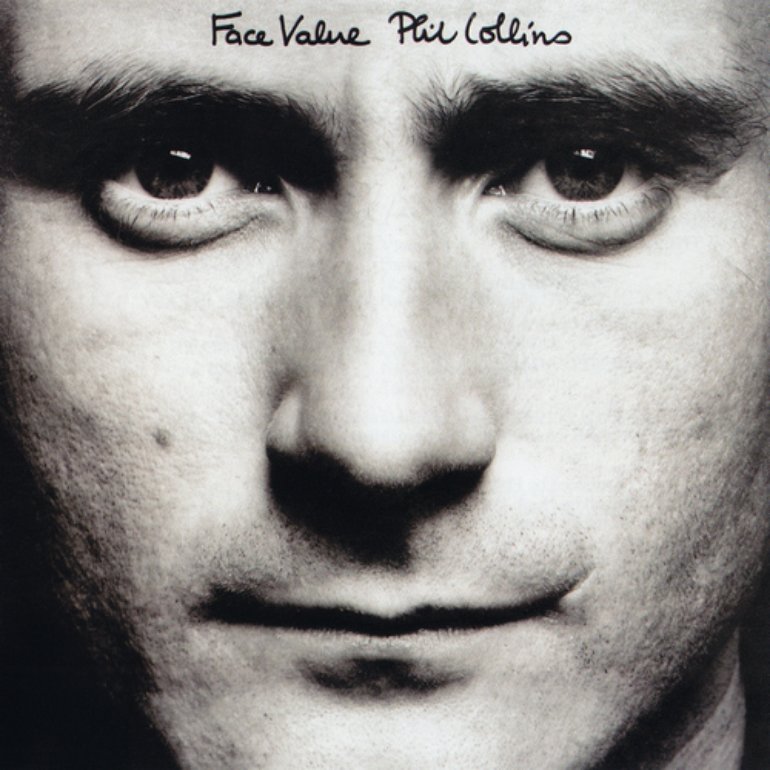On November 21, 1982, Phil Collins embarked on a bold new chapter in his career: his first-ever solo concert. Held in Den Haag, Netherlands, this performance marked the start of his Hello, I Must Be Going! tour, a tour that defined his journey from Genesis drummer and vocalist to a global solo star.
Continue reading “Phil Collins’ First Solo Concert”November 7, 2006: Genesis reunite for the ‘Turn It On Again’ Tour 2007
On November 7, 2006, Genesis fans received long-awaited news during a press conference at the May Fair Hotel in London. Tony Banks, Phil Collins, and Mike Rutherford—the trio that had propelled Genesis to global stardom—announced their reunion for the Turn It On Again tour, set for 2007. It marked the first time in 14 years that Collins, who had stepped away in 1996, would join his bandmates on stage. Chester Thompson and Daryl Stuermer, long-standing touring members, were also set to return, cementing a lineup familiar to fans of the group’s 1980s and 1990s peak.
Continue reading “November 7, 2006: Genesis reunite for the ‘Turn It On Again’ Tour 2007”Six Of The Best
On October 2, 1982, the legendary ‘Six Of The Best’ reunion show with Peter Gabriel and Genesis took place at Milton Keynes.
Continue reading “Six Of The Best”The end of the Invisible Touch Tour at Wembley 1987
On July 4, 1987, Genesis finished their gigantic Invisible Touch tour at Wembley Stadium. It was the fourth sold out night in a row at Wembley.
Invisible Touch
In 1986, Genesis released the album Invisible Touch. It became their most successful album, peaking at #1 in the U.K. and #3 in the U.S. It produced five hit singles: ‘Invisible Touch’, ‘Tonight Tonight Tonight’, ‘Land of Confusion’, ‘In Too Deep’ and ‘Throwing It All Away’. Songs like the title track, ‘Tonight, Tonight, Tonight’ and ‘Land Of Confusion’ with its famous spitting image video would dominate the radio and music TV stations and the international charts of 1986/1987. Genesis were everywhere and bigger than ever. So of course, the band went on a massive tour through North America, Australia, Japan and Europe before finishing in Britain with four sold-out nights at Wembley Stadium in front of 300,000 people.
Purchase Invisible Touch here on Amazon!*
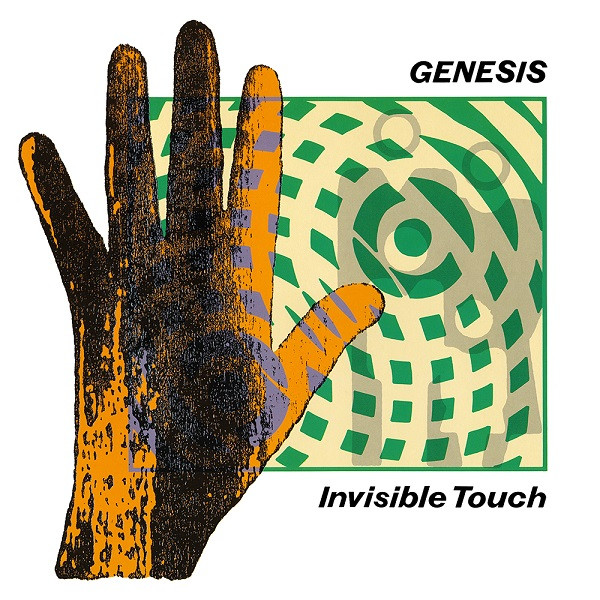
The Invisible Touch tour
The tour began in the U.S. in September 1986 and included 112 dates and sold close to two million tickets. It ended in July 1987. In Australia and New Zealand, the five-man line-up was accompanied by a four-piece string section on ‘In Too Deep’ and ‘Your Own Special Way’. They had to invite the quartet because of local regulations that required them to employ local musicians.
At this time, the band was not only a hit-machine, but a working and brilliant live act. The Vari Lite light show was impressive as always. The band had much material to rely on, but chose mainly new songs from their hit album and the albums before.
The shows were always opened with ‘Mama’ (which sometimes lacked a bit of atmosphere in daylight) and ended with the ‘Turn It On Again’ hit medley that the band had established on the previous tour. The medley included ‘Everybody Needs Somebody to Love’, ‘Satisfaction’, ‘Twist and Shout’, ‘Pinball Wizard’, ‘All Day and All of the Night’ and ‘Karma Chameleon’.
Older songs in the set included ‘Los Endos’, ‘Home By The Sea’ (including it’s meanwhile standard ghost-story introduction) and another ‘In The Cage’ medley. When the tour began, they had played ‘In That Quiet Earth’ and the second half of the epic ‘Supper’s Ready’ after ‘In The Cage’. However, during the tour Phil had difficulties reaching the higher notes in ‘Supper’s Ready’, so by the middle of the tour they had gone back to the usual ending of ‘In That Quiet Earth’ and ‘Afterglow’.
New songs included ‘Domino’ (with another – soon to be famous – introduction by Phil), ‘Tonight, Tonight, Tonight’, ‘Throwing It All Away’, where the call-and-response singing developed throughout the tour, and ‘Invisible Touch’ itself.
Live at Wembley Stadium
‘Nearly 300,000 people at Wembley. OK, there might have been a few repeats in there, but I thought at the time, and I still think now, that moment was the peak of our career’1 – Tony Banks.
By the time Genesis got to Wembley, they had performed the set so often that it had become a true piece of fine art and musicianship. Interestingly, only two shows were scheduled at Wembley, but the demand for tickets was so high, that a third and then a record-breaking fourth night were added. Genesis ended in Guinness World Records until Michael Jackson sold out Wembley Stadiums on seven nights on his Bad World Tour one year later.
The Wembley shows were filmed and released as video and as DVD in 2003. Unfortunately the famous ‘In The Cage’ medley was left out of the release because on every night, the tapes had to be changed during that song.
Apart from that, the results and the performance are astonishing. The band truly ended the tour on a high note there. Looking back at the videos and listening to the songs and performances, we can say that Genesis were at their peak at this very point at Wembley Stadium. Afterwards, the fans had to wait four more years for a new Genesis record.
Title photo: Genesis Nancy 1987. Phil Collins, Tony Banks, Mike Rutherford, Daryl Stuermer, Chester Thompson. Genesis en concert à Nancy le 14 juin 1987 au stade Marcel-Picot de Nancy-Tomblaine Source: Wikimedia Commons, Fredamas / CC-BY-SA-2.5 (https://creativecommons.org/licenses/by/3.0).
Listen to songs recorded at Wembley in 1987 on “Genesis – BBC Broadcasts” – Get it here!*
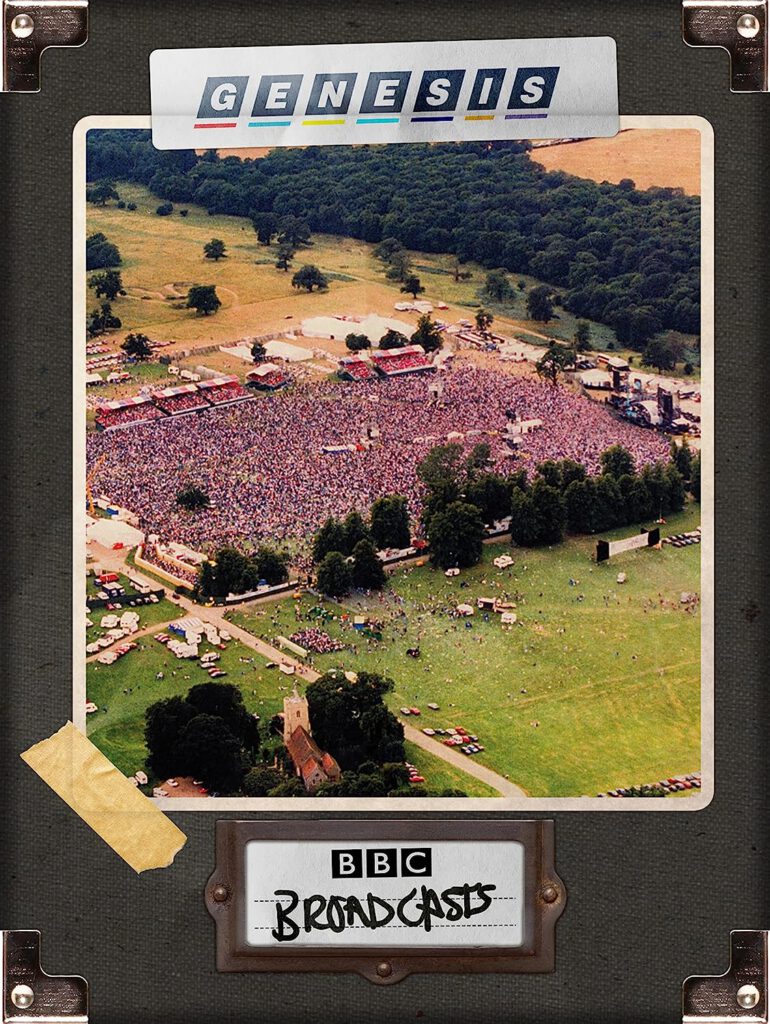
Genesis Music on Amazon*
Purchase Live at Wembley here on Amazon!*
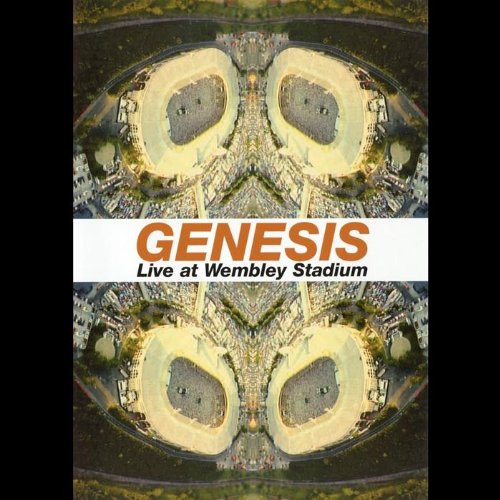
*= affiliate link
- in Banks, Tony; Collins, Phil; Gabriel, Peter; Hackett, Steve; Rutherford, Mike; Dodd, Philip, Genesis. Chapter & verse. (New York: Thomas Dunne Books/St. Martin’s Griffin, 2007), p. 287. ↩︎
The ‘Turn It On Again’ reunion tour
On 11 June 2007, Genesis started their ‘Turn It On Again’ reunion tour in Helsinki. It saw the return of Phil Collins on vocals.
Genesis announced their reunion in 2006
On 7 November 2006, Tony Banks, Mike Rutherford and Phil Collins announced that they were reuniting as Genesis to play a series of shows in Europe in the summer of 2007 and in North America in autumn. Phil Collins had left Genesis in 1996. Although he had appeared with his former band members in the past, this was his official return. The reunion also included Genesis’ long-time live members Chester Thompson on drums and Daryl Stuermer on guitar. Both had not played with the band since 1992.
The first proper gig was planned for 11 June 2007 in Helsinki. With no new album to promote, the band had enough time to go through their material and dust off the old songs. Having not played together for 15 years, rehearsals were a bit more difficult than they all had expected.
Rehearsals for the ‘Turn It On Again’ tour
Tony Banks (keyboards) and Mike Rutherford (guitars, bass) not only had to relearn the songs. They also had to change keys so that Phil Collins, whose voice had dropped over the years, could sing the songs.
He had some trouble relearning some of lyrics. But once he did, he struggled less with them than he had in the past. Songs like ‘Domino’ and ‘Home By The Sea’ with lyrics by Tony Banks were always a challenge for him to sing. (For example lines like ‘Sheets of double glazing’ or ‘Nylon sheets and blankets’). He also listened to live recordings from the past and realized that he had often added some little extras. On this tour he went back to singing the songs the way they were written.
He also had not played Genesis songs on drums for years. On his solo tours, he had done the drum duet with Chester Thompson and played on ‘In The Air Tonight’. But now he had to get himself back in shape and play things like ‘Second Home By The Sea’. Luckily enough, Chester Thompson and Daryl Stuermer were there to back them up and help them out. Daryl had to show them how to play their own songs because he knew and had learned them so well.
But the five of them had played for so long that even after a break of 15 years, the chemistry was still there. Also, they got along much better than ever before. Tony Banks and Mike Rutherford had become looser with age whereas Phil Collins had become a bit more serious. They could talk about things they never dared say to each other 15 years before.
The setlist
And what would Genesis play on this reunion tour? They had plenty of material to choose from. Of course, there some inevitable hits that the fans wanted to hear like ‘Follow You Follow Me’, ‘Invisible Touch’, ‘Mama’ and ‘I Can’t Dance’.
They also played their hit ‘Land Of Confusion’ a bit heavier than usual. It sounded more modern, which was a nod into the direction of the band Disturbed. They had done a metal cover version of the song.
A trip down memory lane on the Genesis reunion tour
Apart from the hits, they also played more ambitious songs from their later period like the already mentioned ‘Home By The Sea’ and ‘Domino’, two of Tony Banks’s favourites. As opener, they decided to do the instrumental intro of ‘Behind The Lines’ from Duke. They added a piece of ‘Duke’s End’ and called the show opener ‘Duke’s Intro’. It was a very strong and powerful opening for the reunion shows and would always make the crowd go wild.
Overall, Phil Collins played much more drums throughout the show than he had in the past. And for ‘I Know What I Like’ he looked at the tambourine dance from 1976 and after a bit of training, was able to do it also on this tour.
Also, they dug out ‘Ripples’ from A Trick Of The Tail (the first album with Phil Collins as lead vocalist from 1976), which they had not played for years. It was a real surprise in the setlist. The same goes for a bit of ‘Duke’s Travels’ that was incorporated into a medley. The setlist was a great mixture of material from all of their history. They played songs from almost every album since 1973. The last song of the set was the Lamb-classic ‘Carpet Crawlers’ from 1974. It was always a very emotional ending for the band and the audiences.
Behind the scenes
The stage set-up for the tour came from acclaimed stage designer Mark Fisher, the lighting design came from Patrick Woodroffe. Behind the band was a huge screen which created a different look and a different setting for each song.
Producer Nick Davis supervised the sound of the band. Also, the band decided to release sound board recordings of each show through an Encore Series.
The first concert in Helsinki
And finally the first gig was played in Helsinki on a warm summer night. The band played flawlessly, the screens showed the right visuals at the right time and the audiences were happy to see Genesis again.
Phil Collins later said that some people expected them to release a new album during this period. But for him, the tour was not only a Genesis reunion tour but also a Genesis farewell tour.
The tour went on until autumn 2007 when the band played North America. After that, it seemed that Genesis had closed the final chapter. When asked what they enjoyed most about the reunion tour, they all agreed that the greatest thing was to be back with old friends and laugh together.
Photo: Genesis, ofwel: Phil Collins, Michael Rutherford, Tony Banks, Chester Thompson en Daryl Stuermer.}} |Source=Maikel Koek, via Wikiportrait |Date= |Author=Maikel Koek |Permission={{Wikiportrait|2008041010026495}} (https://creativecommons.org/licenses/by/3.0).
Ray Wilson announced as new lead vocalist
On 6 June 1997, Tony Banks and Mike Rutherford of Genesis announce the band’s new lead singer after Phil Collins’ departure: 28 year old Ray Wilson.
When it was announced in March of 1996 that Phil Collins would leave Genesis after 25 years, the public was impatient to know who would become the next lead singer of the band. Genesis had survived the loss of their first singer Peter Gabriel in 1975. And when Phil Collins left the band in 1996, the two remaining members Tony Banks (keyboards) and Mike Rutherford (guitars) decided to survive a singer’s loss once more. The two founding members of Genesis started to write and record new songs and tried to find a new singer. Music media suggested several vocalists, until on June 6th 1997, the band announced that Ray Wilson would be their new lead singer.
Ray Wilson
Ray was born in Dumfries, Scotland, on 8 September 1968. He had previously been in a band called Guaranteed Pure and was frontman for the band Stiltskin. Their biggest hit was the song ‘Inside’, used in a Levi’s commercial in 1994. The song had reached no. 1 of the charts. Ray was not an unknown singer when he joined Genesis, but theirs and Stiltskin’s music was worlds apart. His fans and Genesis fans were both surprised and suspicious.
Ray remembers on the Songbook DVD: ‘I was in my little studio writing songs. It was ten in the morning, I was making a coffee, and Tony Smith, the manager of Genesis, was on the phone: ‘Would you like to come and audition to replace Phil Collins?”
In the years before, Phil Collins’ solo success had created an image of ‘Phil Collins and Genesis’, as if Genesis was the band behind him. Filling out this role and changing this public image, would be very difficult.
Calling All Stations
Ray, Mike and Tony went into the band’s studio ‘The Farm’ in Surrey and recorded the new album Calling All Stations*. Most of the songs were already written by Tony and Mike, but Ray was able to add some of his ideas. The album was very dark and melancholic. Phil Collins’ influence on Genesis music, his energy and cheerfulness combined with Mike’s and Tony’s music, was missing. The Genesis chemistry only worked fully when all three of them worked and wrote together.
Ray’s expressive voice worked with the melodramatic music. He did a remarkable job on the album and the following tour. His voice and style was a bit closer to Peter Gabriel’s, but the music on Calling All Stations seemed to be closer to its predecessor We Can’t Dance*. Like We Can’t Dance, Calling All Stations was produced by Nick Davis.
Three singles were released from the sombre, dark record: ‘Congo’, ‘Shipwrecked’ and ‘Not About Us’. Ray co-wrote the last song as well as the songs ‘Small Talk’ and ‘There Must Be Some Other Way’. The drums on the album were played by Israeli session drummer Nir Zidkyahu and Nick D’Virgilio from American prog band Spock’s Beard.
The critics were not too kind. NMW wrote that ‘the world doesn’t care enough about Genesis to make the effort’ to buy the album and ‘like the rest of the population, they’ve forgotten why they were once any good.’ Q wrote that the album consists of ‘just darkness, confusion, individual isolation’ and described it as ‘one-paced and one-dimensional.’
Live on tour 1998
On tour, Ray proved that he could sing songs from all the eras. The setlist covered hits like ‘Invisible Touch’, ‘No Son Of Mine’ or ‘Follow You Follow Me’ (in a lovely acoustic version), younger epics like ‘Home By The Sea’ and Gabriel-era songs like ‘Carpet Crawlers’ and ‘The Lamb Lies Down On Broadway’. The new material worked well between these songs and some tracks, like the title track, were even better live. Ray, Mike and Tony were accompanied by drummer Nir Zidkyahu and guitarist Anthony Drennan, who filled the roles of Chester Thompson and Daryl Stuermer.
The album was not as successful as the ones before
But unfortunately the album was not a big commercial success when compared to the albums before. It reached no. 2 in British charts, but only no. 54 in America. Also, ticket sales were not as high was they used to be and the tour had to be minimized in terms of production and venues. The American leg of the tour had to be cancelled completely. So after the 1998 tour, Tony Banks and Mike Rutherford decided to put Genesis to rest.
It was not to be the end of Genesis. But back in 1998 it looked like it. Unfortunately, Ray Wilson, who had been thrown into this situation, was even made responsible by some fans and critics. This is simply not fair. Ray has a unique voice and delivered the songs – his own and Peter’s and Phil’s – in a special way.
After the end of Genesis, Ray took some time to recover and has since started a solo career. He releases solo albums and still plays some Genesis and Genesis-related songs during his live shows.
Title photo: Ray Wilson live in Dortmund in 2017 (Photo: André Wilms of ‘The Photography Of Mister Ilms)‘.
Listen to live versions from the 1998 tour with Ray on “Genesis – BBC Broadcasts” – Get it here!*

Genesis Music on Amazon*
*= Affiliate Link
‘We Can’t Dance’ in Tampa – The story of the 1992 tour
Tampa, Florida, 17 May 1992. Genesis leave the stage at the fourth show of their gigantic We Can’t Dance tour after just two songs. They leave behind an almost rioting audience. The band had to cancel the show after ‘Land Of Confusion’ and ‘No Son Of Mine’ due to Phil Collins’ throat problems. Luckily enough, this was just a one-time affair. The We Can’t Dance tour became one of their biggest productions in terms of stage setup and venues.
Let’s take a look back at the massive production of the We Can’t Dance tour.
We Can’t Dance
We Can’t Dance*, the band’s fourteenth studio album, was released in 1991. It was another monumental blockbuster and a huge success all over the world. Despite being in the business for almost 25 years, Genesis still reached top of the charts. In terms of sales, We Can’t Dance was one of their most successful albums. It produced four hit singles: ‘No Son Of Mine’, ‘I Can’t Dance’, ‘Hold On My Heart’ and ‘Jesus He Knows Me.’ All of them were accompanied by elaborate music videos. Especially ‘I Can’t Dance’ and ‘Jesus He Knows Me’ stand out for their high production and sense of humour.
Massive venues and Jumbotrone video screens on the We Can’t Dance tour
Of course, this blockbuster of an album had to be followed by a massive tour. Over 60 concerts were planned for North America and Europe in 1992. The band decided to play stadiums, although they were not too happy to play bigger venues. But the idea of playing three months of stadiums instead of ten months of arenas appealed to them. They did not want to be on tour for too long.
Therefore, the stage set up reached another level on this tour. With new technology available, three Sony Jumbotron video screens were put behind the stage so that everyone in the stadium, right to the back, could witness the action onstage. The band rehearsed in the Goodyear blimp hanger in Houston. It was one of only a few spaces that was large enough to accomodate the new stage set-up.
The setlist
Phil Collins, Mike Rutherford and Tony Banks were of course accompanied by their long-time live members Chester Thompson and Daryl Stuermer. The band rehearsed for a few weeks. The setlist included mainly material from the new album. They added a few tracks from its predecessors Invisible Touch* and Genesis* and the inevitable ‘Turn It On Again’ as an encore. A 20-minute medley was played that included the band’s most prominent material from the 1970’s. It was different to the ‘In The Cage’-medley they had played for 15 years and a welcoming change.
Leaving the stage in Tampa, Florida
They started the tour on 8 May 1992 in Texas. On the fourth night of the tour in Tampa, Phil Collins’ voice gave up. When necessary, he had supported his voice with various medical methods on tour. And he knew that a stadium full of fans could sing the songs word by word and help him out. But on that night he could not continue. The band left the stage after just two songs, ‘Land Of Confusion’ and ‘No Son Of Mine.’
But his voice worked for the rest of the tour. They ended the first leg of the tour with a huge open-air show in Knebworth Park in August that was broadcasted on Premiere. In the autumn of 1992, the band continued their tour and played various cities in their home country. Throughout the 80’s, the had not played that many shows in Great Britain. On this leg of the tour they made up for that. The concerts at Earl’s Court in London were filmed for video and later DVD release: The Way We Walk Live in Concert.
Purchase The Way We Walk Live In Concert here at Amazon*
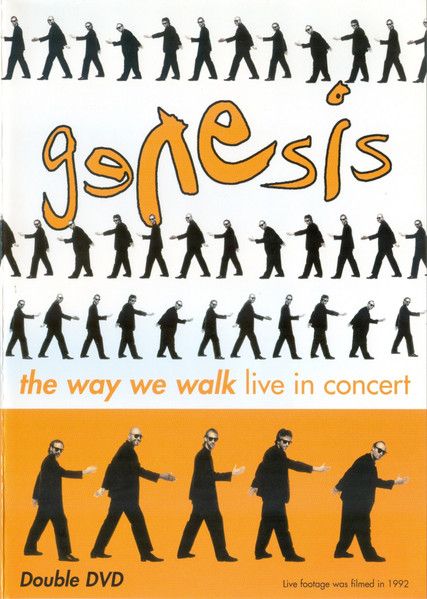
“The Way We Walk”
The tour also produced a double live album, Live – The Way We Walk (The Long And The Shorts). It was split into The Shorts* and The Longs instead of splitting an entire show in its middle. Some fans did not like this approach, but at this point in Genesis history, it was a wise decision. Many listeners knew them for their single hits. Other fans just liked their long and epic songs. In later releases of the double live album, the songs were put into the right order.
Purchase “Genesis – The Shorts” here at Amazon*
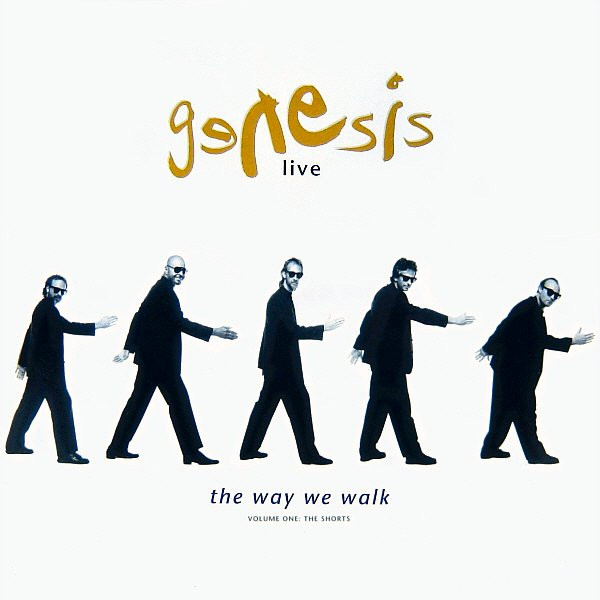
Purchase “Genesis – The Longs” here at Amazon*
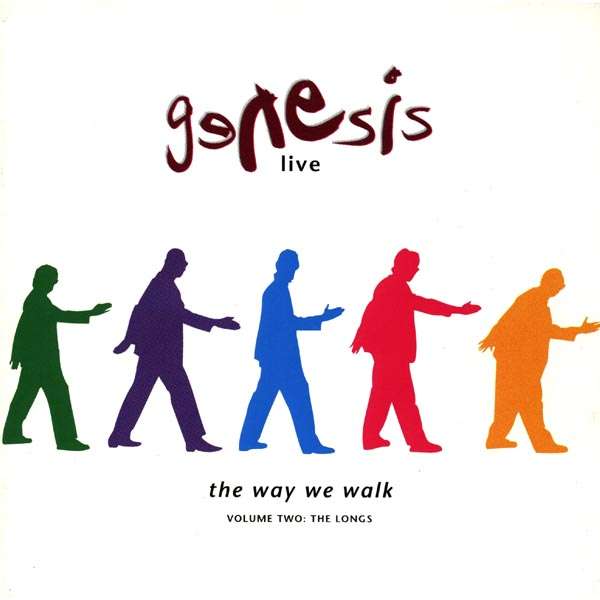
The tour turned out to be Genesis last with Phil Collins until 2007. It was also the last tour for drummer Chester Thompson and guitarist/bassist Daryl Stuermer until 2007. By the end of 1992, none of them knew. Also, the fans did not know that they had witnessed Genesis for the last time in this incarnation (if they even to to see the 1992 tour). But as we know, the band got together again 15 years later. But that is another story.
Title photo: Genesis Live- Land Of Confusion. Photo taken during the performance by Genesis of “Land of Confusion” in Knebworth, England (August 2nd, 1992). Source: Wikimedia Commons, Manny Hernandez/ CC-BY-SA-2.5 (https://creativecommons.org/licenses/by/3.0).
Listen to live versions from the 1992 gig at Knebworth on “Genesis – BBC Broadcasts” – Get it here!*

Genesis Music on Amazon*
*= Affiliate Link
Genesis’ Induction into the Rock and Roll Hall of Fame (2010)
On March 15, 2010, Genesis was inducted into the Rock and Roll Hall of Fame. Phil Collins, Mike Rutherford, Tony Banks, and Steve Hackett attended the ceremony, accompanied by long-time live members Chester Thompson and Daryl Stuermer. Peter Gabriel, however, chose not to attend. The band was introduced by Phish frontman Trey Anastasio.
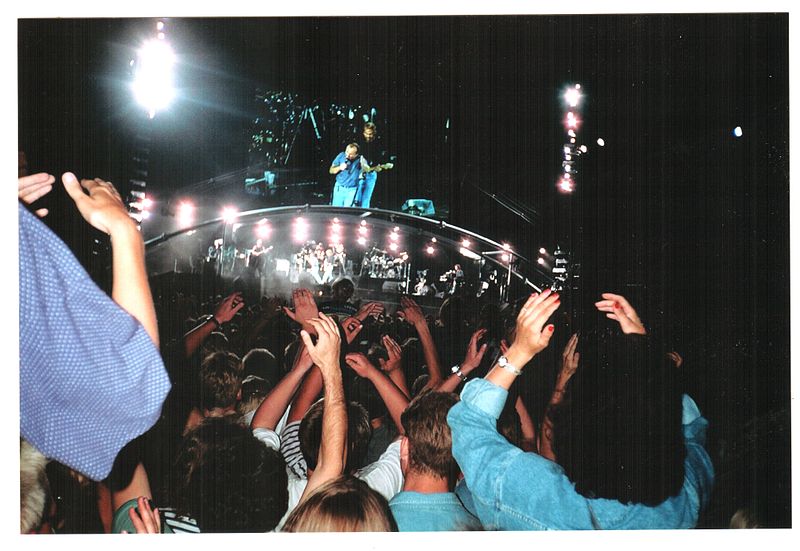
Phil Collins’ Health Issues Following the ‘Turn It On Again’ Tour
By the time Genesis received this honor, they had already been on hiatus for three years. Their last tour, Turn It On Again, took place in 2007, featuring Collins, Rutherford, and Banks, along with Stuermer and Thompson. The tour was a massive success, but it came at a cost.
During the tour, Phil Collins began experiencing numbness in his left arm and fingers while drumming. It was later revealed that he had suffered severe nerve damage in his neck and back – likely a result of decades of drumming. With his ability to play drums compromised, the prospect of future Genesis live performances seemed highly unlikely.

Would Peter Gabriel Reunite with His Former Bandmates?
As news of Genesis’ induction spread, speculation ran wild. Would all former members attend? Would Peter Gabriel make a surprise appearance? Would they even perform together?
The answer was a clear no. Gabriel was preparing for his own tour and opted out of the ceremony. Over the years, he had distanced himself from Genesis, having left the band in 1975 to embark on a highly successful solo career. He had no interest in rekindling the past and, to put an end to the rumors, simply stayed away. However, the other four core members – Banks, Rutherford, Collins, and Hackett – were present, along with their families and longtime touring musicians Stuermer and Thompson.
The induction speech was delivered by Trey Anastasio of Phish.
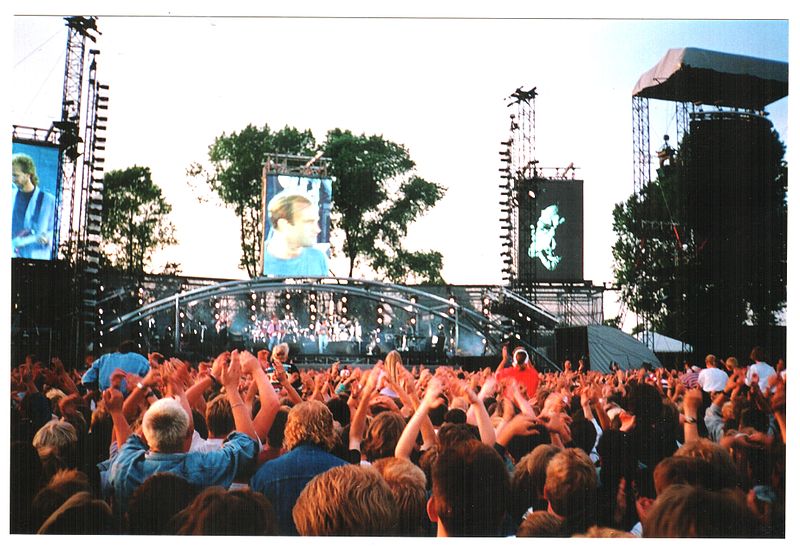
Phish’s Performance: Two Unusual Genesis Songs
Phish performed two Genesis songs that evening: Watcher of the Skies and No Reply at All – one from each era of the band, yet both somewhat unconventional choices. Interestingly, they seemed to struggle more with the ‘pop’ track No Reply at All than with the complex, progressive Watcher of the Skies.
Trey Anastasio’s speech was a highlight of the night. Rather than rehashing well-known Genesis anecdotes, he provided a musician’s perspective on the artistry behind Trespass, Selling England by the Pound, and Duke. His speech was a fitting tribute, emphasizing that Genesis wasn’t being honored merely for their commercial success, but for their musicianship and innovation.
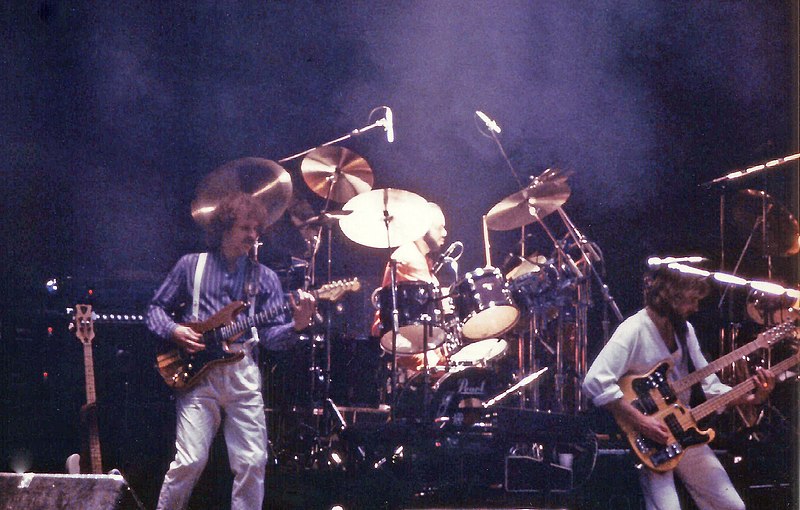
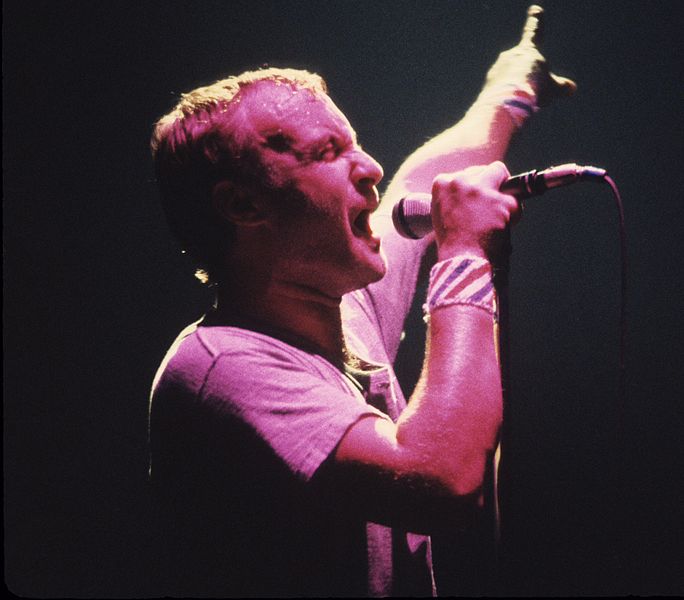
A Bittersweet Moment for Genesis Fans
When the four classic members took the stage, Rutherford, Collins, and Hackett each shared a few words. (Hackett’s speech, admittedly, was a bit awkward.) Rutherford acknowledged Gabriel’s absence, explaining that he was busy preparing for an orchestral tour.
Later, Phil Collins admitted he was actually relieved that Gabriel hadn’t attended – otherwise, the night would have been overshadowed by inevitable questions about a possible reunion. The induction felt like a final chapter in Genesis’ long and storied career, a celebration rather than a new beginning.
Unbeknownst to fans at the time, this would be the last public appearance of Genesis for many years – and also the final time Chester Thompson would stand alongside them.
Trey Anastasio summed it up best when he described Genesis as ‘rebellious, restless, and constantly striving for something more.’ Few statements could better encapsulate the essence of their career.
Title photo: Genesis on stage during the The Lamb Lies Down On Broadway tour, 1974-75. Source: Wikimedia Commons, Nick Contador/ CC-BY-SA-2.5 (https://creativecommons.org/licenses/by/3.0).
First photo: Genesis live, July 29th, 1992 Kiel, Germany. The Nordmarksportfeld. Source: Wikimedia Commons, Derzsi Elekes Andor/ CC-BY-SA-2.5 (https://creativecommons.org/licenses/by/3.0).
Second Photo: The Way We Walk – The Shorts (Cover).
Third photo: Genesis live, July 29th, 1992 Kiel, Germany. The Nordmarksportfeld. Source: Wikimedia Commons, Derzsi Elekes Andor/ CC-BY-SA-2.5 (https://creativecommons.org/licenses/by/3.0).
Fourth photo: Daryl Stuermer, Chester Thompson and Mike Rutherford, Liverpool Empire, Duke Tour 1980. Source: Wikimedia Commons, Rodhullandemu/ CC-BY-SA-2.5 (https://creativecommons.org/licenses/by/3.0).
Fourth photo: Genesis, Phil Collins, Strasbourg, October 1981. Source: Wikimedia Commons, Philippe Roos from Strasbourg/ CC-BY-SA-2.5 (https://creativecommons.org/licenses/by/3.0).
Face Value (1981) – Phil Collins
In February 1981, Phil Collins unveiled his debut solo album, Face Value, marking a significant departure from his role as Genesis’s frontman. The album not only showcased Collins’s personal and musical evolution but also cemented his status as a prominent solo artist in the 1980s.
Genesis and Personal Turmoil
By 1978, Collins had transitioned from Genesis’s drummer to its lead vocalist. The band’s 1978 album, …And Then There Were Three…, featured the hit “Follow You Follow Me,” signaling a shift towards more concise and direct songs. During this period, Collins faced personal challenges; his wife, Andrea, threatened to leave due to his extensive touring commitments. Upon returning from a tour, Collins discovered that Andrea had moved to Canada with their children. Despite efforts to reconcile, including a move to Vancouver, the marriage ended in divorce.
Creation of Face Value
In the aftermath of his divorce, Collins channeled his emotions into music. He set up a home studio in Surrey, equipped with a piano, drum machine, and an 8-track tape recorder. Here, he began crafting demos that delved into his personal experiences. When Genesis regrouped to work on their 1980 album, Duke, Collins presented some of these demos. Two tracks, “Misunderstanding” and “Please Don’t Ask,” were included in the album. Encouraged by the positive reception, Collins decided to pursue a solo project, collaborating with producer Hugh Padgham to develop his demos into a full-length album.
Musical Diversity and Notable Tracks
Face Value is a tapestry of various musical styles, reflecting Collins’s diverse influences. The opening track, “In the Air Tonight,” is renowned for its haunting atmosphere and the iconic drum break that has since become legendary. The song’s lyrics were largely improvised, capturing the raw emotion of the moment.
Another standout track, “I Missed Again,” introduces a brass section featuring the Phenix Horns, known for their work with Earth, Wind & Fire. This collaboration infused the song with a vibrant, funky energy, a sound that would become a hallmark of Collins’s future solo endeavors.
The album also explores a range of genres:
“The Roof Is Leaking”: A track with Delta blues and country influences, adding to the album’s eclectic nature.
“You Know What I Mean”: A poignant ballad showcasing Collins’s vulnerability, accompanied solely by piano and vocals.
“Hand in Hand”: An instrumental piece blending jazz and world music elements, highlighting the talents of the assembled musicians.
Commercial Success and Legacy
Upon its release, Face Value received critical acclaim and achieved significant commercial success. The album topped the UK Albums Chart for three weeks and reached No. 7 on the US Billboard 200. It has since sold over 5 million copies in the US and over 1.5 million in the UK. The success of Face Value not only established Collins as a solo artist but also set the stage for a series of successful albums throughout the 1980s.
In retrospect, Face Value stands as a testament to Phil Collins’s ability to translate personal adversity into a universally relatable and sonically diverse album. Its enduring appeal lies in its raw emotion, innovative production, and the seamless fusion of various musical styles.
The Longs (1993) – Genesis
Released in January 1993, Live – The Way We Walk, Volume Two: The Longs marked the end of an era for Genesis. Not only was it the band’s last release with Phil Collins before his departure, but it also became their final UK number-one album. As the second volume of the The Way We Walk live series, The Longs captured the epic and progressive side of Genesis, contrasting with Volume One: The Shorts, which focused on the band’s chart-topping hits.
Continue reading “The Longs (1993) – Genesis”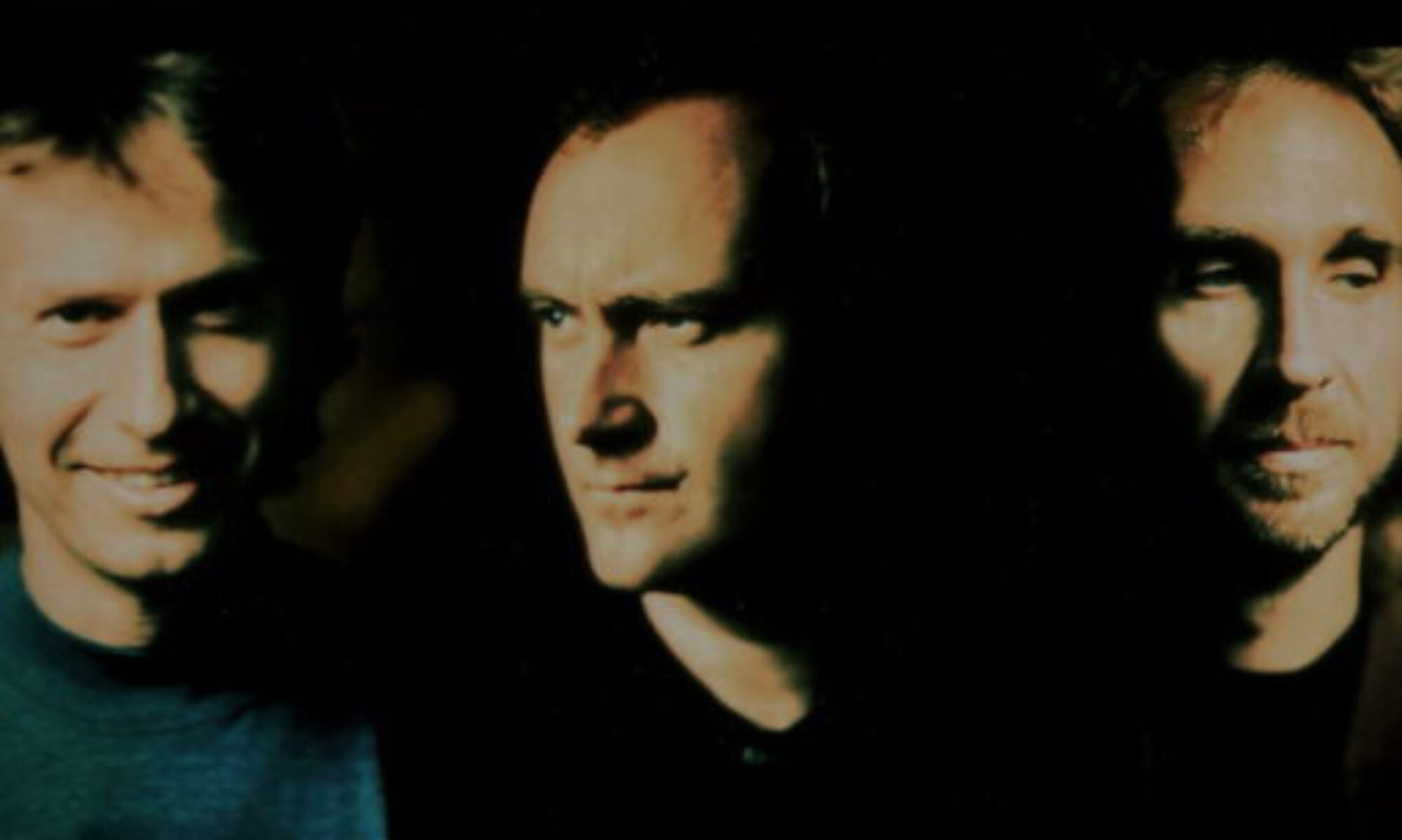
![Phil Collins on the cover of Live at Perkins Palace [1982]](https://genesis-band.com/wp-content/uploads/2024/11/Phil-Collins-on-the-cover-of-Live-at-Perkins-Palace-1982.jpg)
